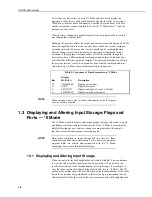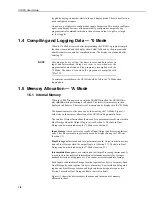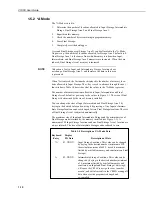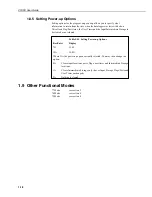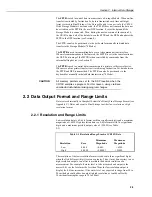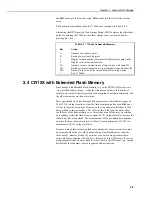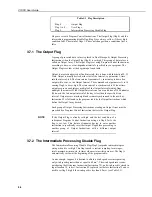
CR10X User Guide
2-2
The Data Storage Pointer (
DSP
) is used to determine where to store each new
data point in the Final Storage area. The DSP advances to the next available
memory location after each new data point is stored.
Output Processing Instructions store data into Final Storage only when the Output
Flag is set. The string of data stored each time the Output Flag is set is called an
output array. The first data point in the output array is a 3-digit output array ID.
This ID number is set in one of two ways:
1.
In the default condition, the ID consists of the program table number and the
instruction location number of the instruction which set the Output Flag for
that particular array of data. For example, the ID of 118 in Figure 2-2
indicates that the 18th instruction in Table 1 set the Output Flag.
2.
You can set the output array ID with the second parameter of Instruction 80.
The ID can be set to any positive integer up to 511. This option allows you
to make the output array ID independent of the programming because the
program can be changed (instructions added or deleted) without changing
the output array ID. This avoids confusion during data reduction, especially
on long term projects where program changes or updates are likely.
Figure 2-2 Output Array ID
If Instruction 80 is used to designate the active Final Storage Area
and parameter 2 is 0, the output array ID is determined by the posi-
tion of Instruction 80 or by the position of the instruction setting the
Output Flag, whichever occurs last.
A start of array marker ($ in Figure 2-1) is written into Final Storage with the
Output Array ID. This marker is used as a reference point from which to number
the data points of the output array. The start of array marker occupies the same
Final Storage location as the Array ID and cannot actually be seen.
Data is stored in Final Storage before being transmitted to an external device.
There are four pointers for each Final Storage Area which are used to keep track
of data transmission. These pointers are:
1.
Display Pointer (
DPTR
)
2.
Storage Module Pointer (
SPTR
)
3.
Telecommunications (Modem) Pointer (
MPTR
)
4.
Printer Pointer (
PPTR
)
The
DPTR
is used to recall data to the Keyboard/Display. The positioning of this
pointer and data recall are controlled from the keyboard using the *7 Mode.
NOTE

